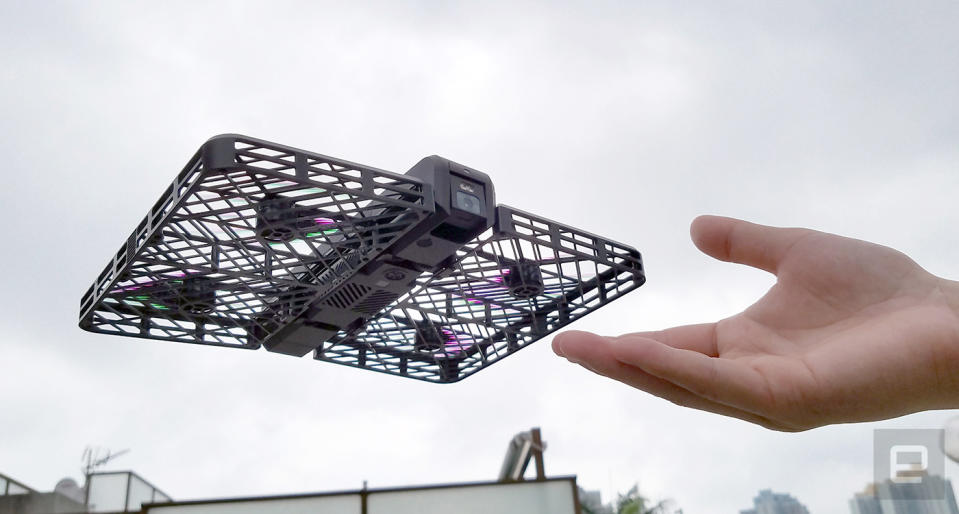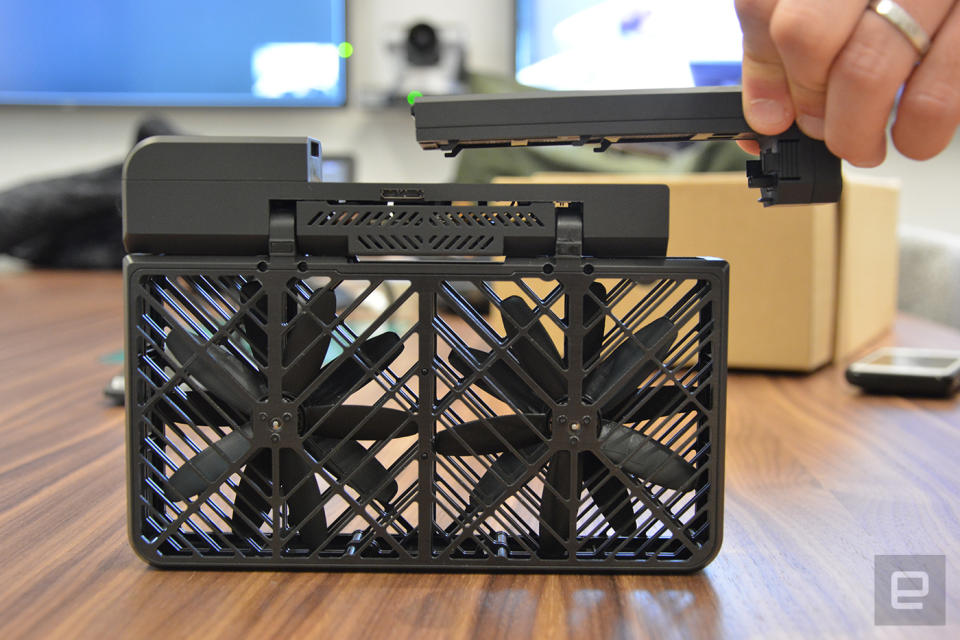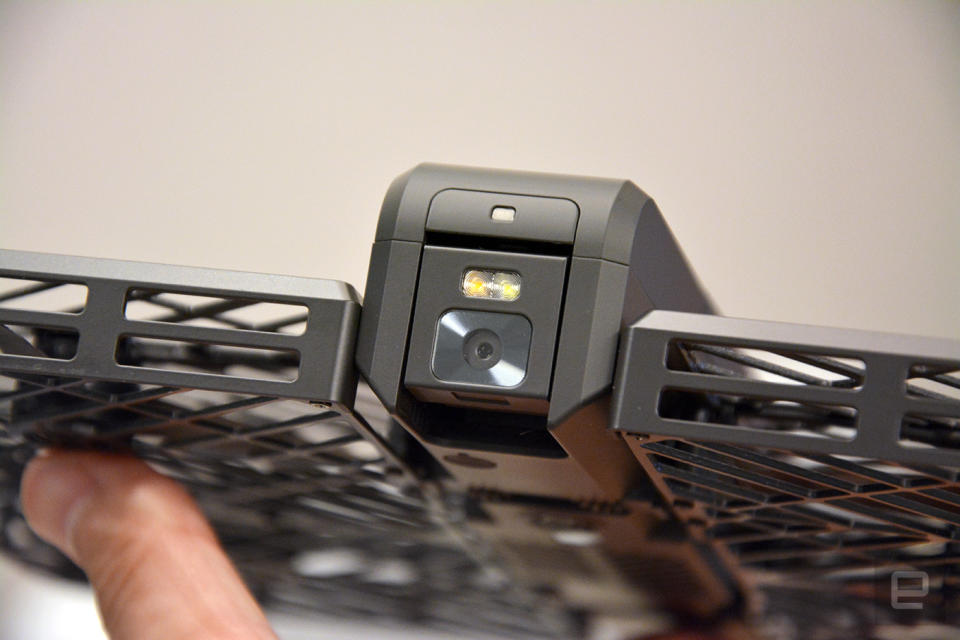Hover Camera is a safe and foldable drone that follows you
You can grab it any way you want without hurting yourself.

"Follow me" is an up-and-coming feature on consumer drones, and then you've also got those that are foldable for the sake of portability. Very few devices carry both advantages, but Beijing startup Zero Zero Robotics has already gone further with its Hover Camera. As the name suggests, this drone is mainly for aerial photography and videography, but what makes it even cooler is the fact that its propellers are fully enclosed by a strong carbon fiber frame, thus making it the safest drone we've ever played with. As you can see in our hands-on video after the break, you can literally grab it whenever you like without sacrificing any of your fingers to the drone gods.
The Hover Camera comes in at only 238 grams, which is just below the FAA's limit for mandatory hobbyist drone registration. It's small as well: When the propeller wings are folded, it's about the size of a VHS cassette tape. Once you open it up, you'll see all four propellers with brushless motors, all of which are apparently developed in-house. A company rep point out that to enable precise control in such a small device, off-the-shelf components just wouldn't work.
Likewise, the A.I. algorithm is also built from ground up, and it relies on Qualcomm's Snapdragon Flight platform which is running at full speed all the time. Despite this, Zero Zero Robotics' design is able to reuse some of the downward airflow to cool the chipset; and a single charge will last for about eight minutes, after that you can easily swap out the battery at the top.

For these reasons alone, MQ Wang, CEO of Zero Zero Robotics and a PhD graduate at Stanford University, isn't worried about his product being copied. "It's a lot harder to build things of this size versus bigger things. Something of this size needs to be built from ground up... We use a completely proprietary algorithm, as we're squeezing every single drop of juice out of the Snapdragon 801; and we don't use open source code because it's not good enough."
The main camera at the front takes 13-megapixel stills as well as 4K video, and it comes with a dual-tone flash which might come in handy. Since it's only on a single-axis gimble, it uses electronic image stabilisation which is still being fine-tuned. There's also a downward-facing 3-megapixel camera and a sonar underneath to help stabilise the drone itself. Wang said you can expect the Hover Camera to achieve similar level of image quality as modern high-end smartphones.

The Hover Camera doesn't come with a controller; it's all done with your fingers and a couple of virtual buttons in the mobile app, as long as you're connected to the drone's WiFi hotspot. A single finger drag controls the camera's pitch and the drone's yaw, and a two-finger drag controls the altitude and horizontal direction. There are also two dedicated buttons for moving forward and backward. Obviously, the app provides a live video stream, and it also lets you grab a 720p copy of the 4K videos stored in the drone's 32GB internal memory; you'll need to use a micro-USB 3.0 Type B cable to transfer the original copies to your computer.
At the moment, the app offers a few features: there's the self-explanatory 360 Pano mode, along with face tracking and body tracking. To start the tracking modes, simply toggle video recording mode in the app, and once you see a bracket locked onto you, just start recording. The tracking worked well when I walked around either indoor or outdoor, but once I started running, it struggled to track despite its top speed of nine meters per second. As you can see in our hands-on, video quality is also not quite there yet at the moment, but the company promises that all will be fixed by the time this device launches. You can also expect more cool features like gesture control and orbiting mode to be added later, though there's no word on when these will be made available.

Zero Zero Robotics has yet to reveal a price for the Hover Camera, but it's aiming for somewhere below $600, which seems pretty reasonable given its capabilities and materials. The beta trial is now open and if all goes well, we'll be seeing this drone hitting the market some time this summer, followed by a whole range of other robotic products from this ambitious startup of some 80 people.














